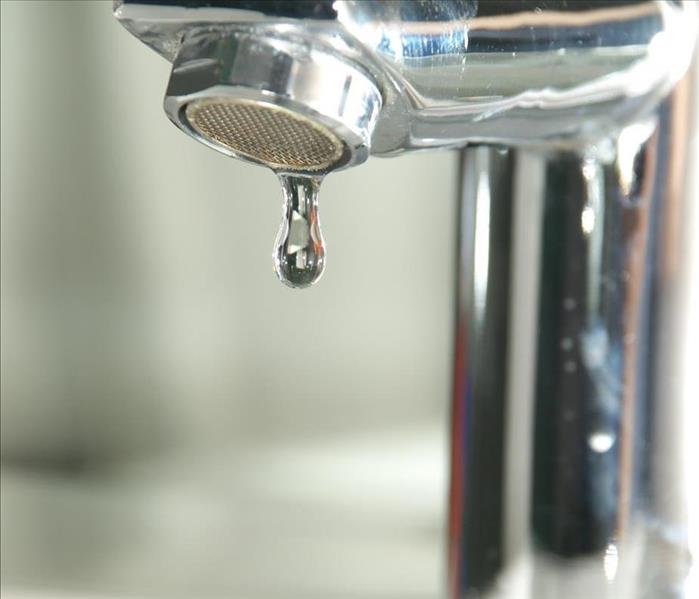How To Repair a Leaking Faucet
11/24/2021 (Permalink)
When your home is quiet and you suddenly hear the quiet sound of a leaking faucet, it's often the prelude to another home maintenance chore. Don't postpone this repair, though; that little drip can add up to gallons of wasted water and an increased Salt Lake City, UT, water bill.
5 Steps of Leaking Faucet Repair
Here are the steps you can take to fix the leak before contacting a water and mold cleanup and repair crew to address any damage:
1. Turn Off the Water
Start by looking underneath the sink. There should be pipes running along the wall with a handle for shutting off the water. Turn the handle clockwise. Once you believe the water is off, turn the faucet on in the sink to be sure. Next, plug the sink to prevent losing any hardware down the drain.
2. Determine the Type of Faucet
There are four common types of faucets: compression, ball, cartridge, and ceramic disk. The compression faucet has separate handles for hot and cold water, so it is easy to identify. You may need to disassemble the faucet to determine the other types of mechanisms. The ball faucet has a ball bearing inside the faucet. The cartridge and ceramic disk faucets have, respectively, a cartridge and ceramic disk within the faucet.
3. Gather Your Tools
Before you start taking the faucet apart, gather the supplies you'll need. These include a bucket, some towels, and rags, an Allen wrench, an adjustable wrench, some needle nose pliers, slip joint pliers, and both flathead and Phillips screwdrivers. You will probably also need a faucet repair kit and some fresh O-ring seals. Make sure you have an area to lay the parts of the faucet, so they don't get lost.
4. Identify the Source of the Leak
Once you have taken the dripping faucet apart, look for a dried-out or worn rubber washer, a piece of broken hardware, or gaps between mechanisms. The specific steps for repairing or replacing parts vary by type of faucet. For example, repairs to a cartridge faucet often involve cutting out old O-rings and using a plumber's grease when installing new rings. In a compression faucet, you can generally pull the washer out; however, you do need to have the exact match for a good repair. You can usually find the specifics for your leaking faucet online or at your local hardware store.
5. Reassemble the Faucet
After you've replaced the damaged components, put the faucet back together. If you're not sure, refer to the instructions on the repair kit or use an online how-to video. Don't put your supplies away, however, until you have tested the faucet. There shouldn't be any drips from the faucet after a successfully fixed leak.
Contact Professionals To Prevent Mold
After completing your leaking faucet repair, it's important to contact mold and water damage professionals. It doesn't take long for a small amount of hidden moisture to develop into a thriving mold colony. You may not spot any mold right now, but when you can see or smell it, the problem has already become significant. Remember that prevention and quick action is the best way to limit the expense of mold remediation.





 24/7 Emergency Service
24/7 Emergency Service
